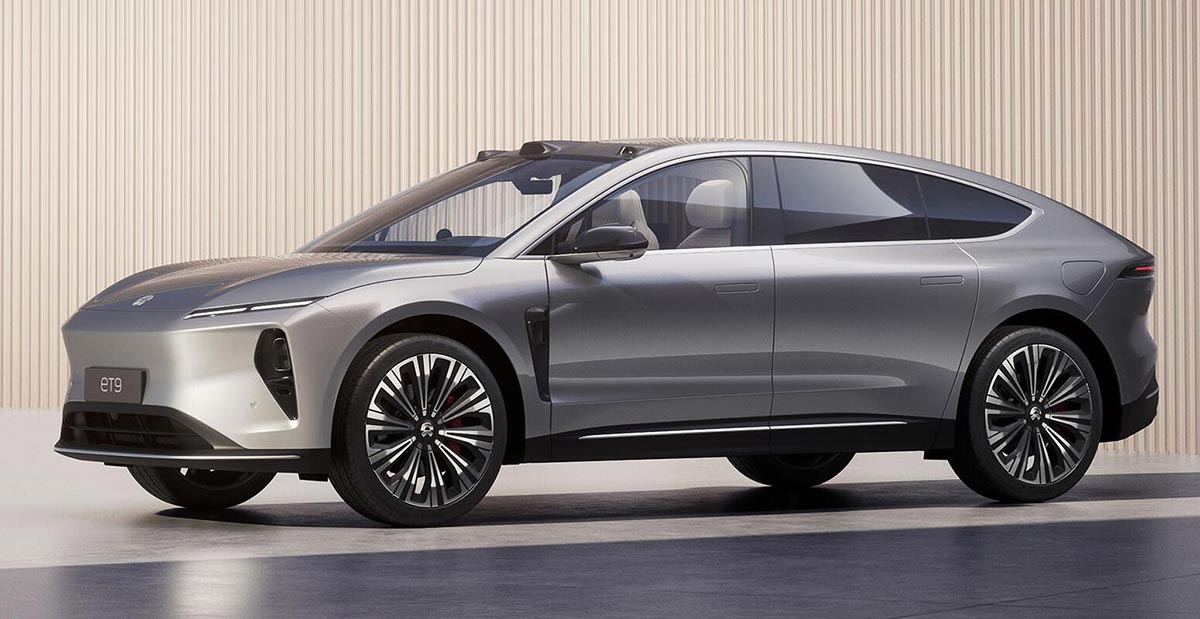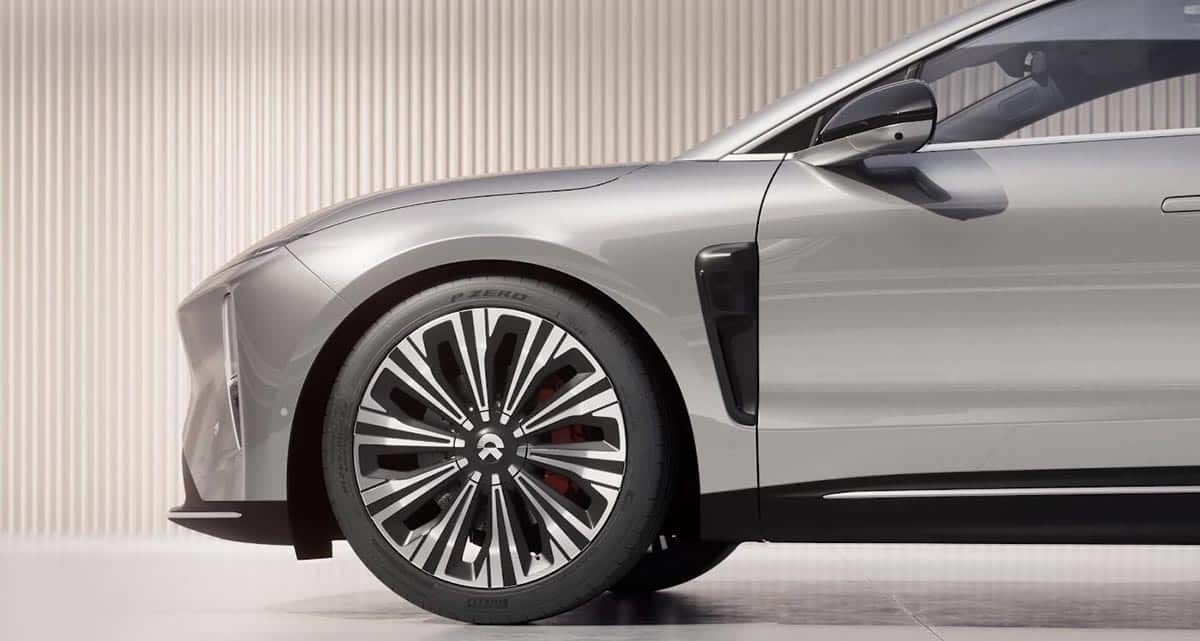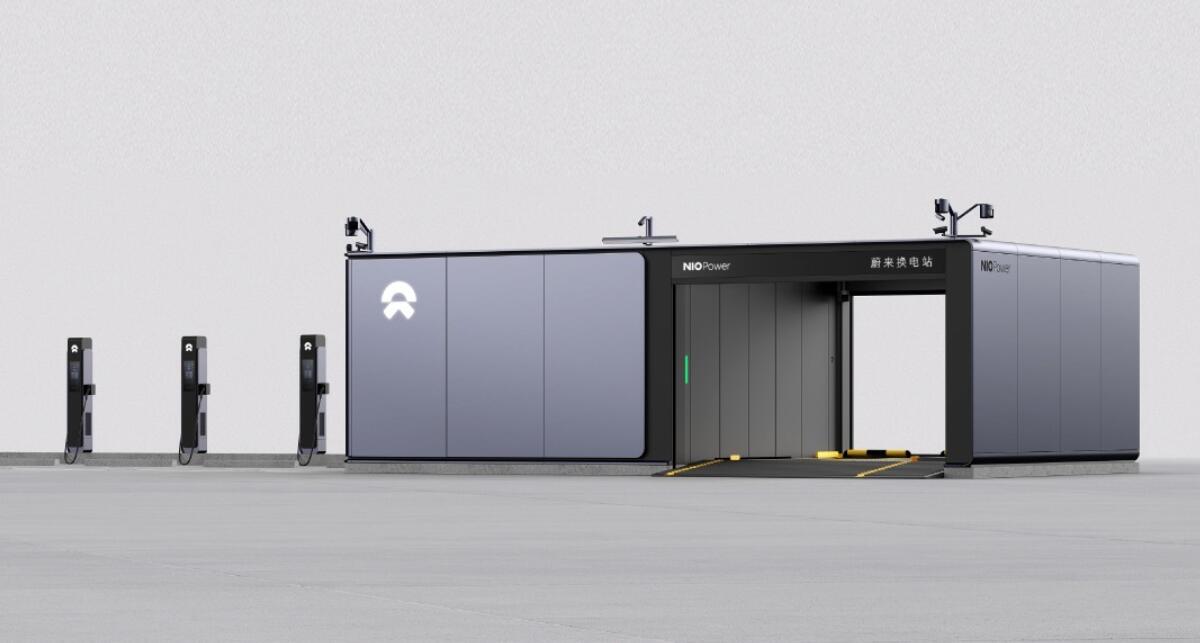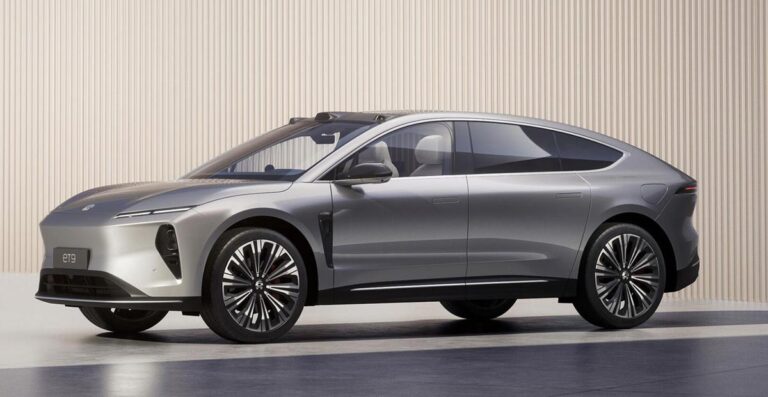ET9 adds two Robin W medium-range wide-angle LiDARs for the first time, in addition to one Falcon ultra-long-range LiDAR. Nio's fourth-generation swap station will feature six Robin W LiDARs.
(Image credit: Nio)
Nio (NYSE: NIO) unveiled its executive flagship sedan, the ET9, and the fourth-generation battery swap station at its Nio Day 2023 event on December 23, which will use more of its LiDAR supplier Seyond's products.
The ET9 is equipped with a next-generation LiDAR system solution jointly defined by Nio and Seyond, which for the first time includes two Robin W medium-range, wide-angle LiDARs on top of the original one Falcon ultra-long-range main-view LiDAR, Seyond said yesterday.
The combination of these three LiDARs will be essential for the continued evolution of the Nio ET9's high-level autonomous driving capabilities, Seyond said in a press release.
Seyond, previously known as Innovusion, officially changed its name 10 days ago. Founded in 2016, the company has R&D centers in Silicon Valley, Suzhou and Shanghai, and LiDAR manufacturing facilities in Ningbo and Suzhou.
Nio first mentioned the partnership between the two when it unveiled the ET7 sedan at its Nio Day 2020 event on January 9, 2021. On March 28, 2022, Nio delivered the first ET7 vehicles, signaling the mass production of Seyond's LiDAR products.
Starting with the ET7, Nio's NT 2.0-based models come standard with a roof-mounted Falcon LiDAR.
To date, Falcon, the standard hardware on Nio's NT 2.0 platform models, has helped Nio's NOP+ (Navigate on Pilot Plus) accumulate nearly 200 million smart driving kilometers, Seyond said yesterday.
The launch of the Nio ET9 marks a new phase in the partnership between Nio and Seyond, which will continue to support the evolution of Nio's perception system, the LiDAR maker said.
The Robin W has a maximum detection range of 150 meters, 2x the ranging capability of other comparable products on the market, and has nearly 10x the angular resolution of comparable products, Seyond said.
They help vehicles provide a more comfortable user experience in assisted driving scenarios such as highway lane changes, unprotected turns in urban areas and vehicle park-outs, the company said.
Robin W has extremely low power consumption and a small size, and is integrated into the two sides of Nio ET9, balancing looks and function, Seyond said.
This combination of Falcon and Robin W solution gives the Nio model a 350° LiDAR perception, Seyond said.
Nio said at the launch of the ET9 that the model will feature the Aquila 2.0 sensing system, which can detect a maximum area of more than 400,000 square meters.
Nio also unveiled the fourth-generation battery swap station at Nio Day 2023, which will be powered by four Nvidia Orin X chips and six ultra-wide angle LiDARs.
Nio didn't mention more details about the LiDAR at the time, but Seyond said yesterday that this next-generation station will carry six Robin W LiDARs to provide a better sense of the environment around the station.
Nio is currently installing the third-generation battery swap station that carries two LiDARs as well as two Nvidia Orin chips.
Nio unveiled its first in-house chip, Yangjian, on September 21, a LiDAR master chip jointly built by the company and Seyond.
Seyond plans to make a US initial public offering (IPO) that will issue up to 21,382,252 ordinary shares and list them on the Nasdaq exchange, according to an August 10 announcement on the China Securities Regulatory Commission's website.




